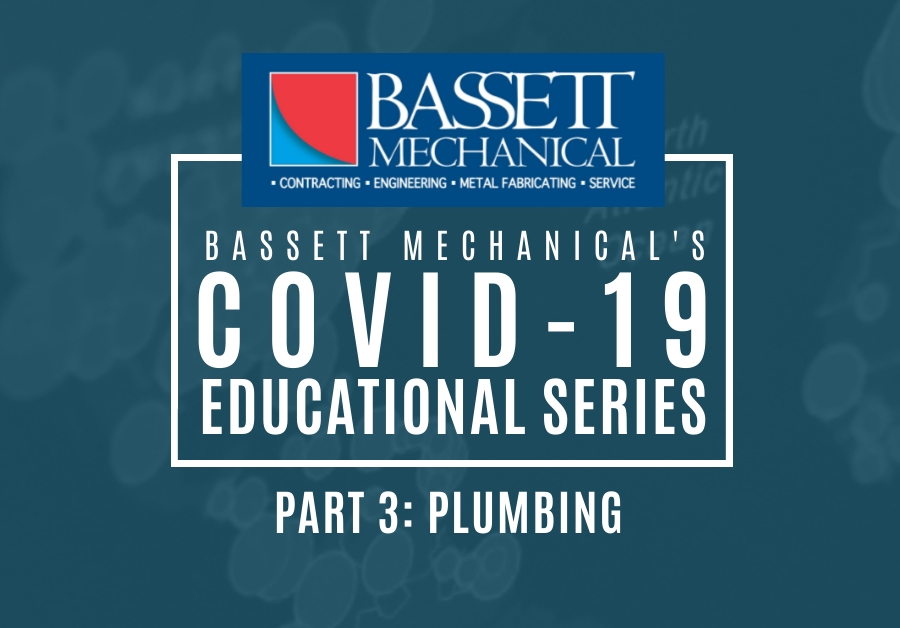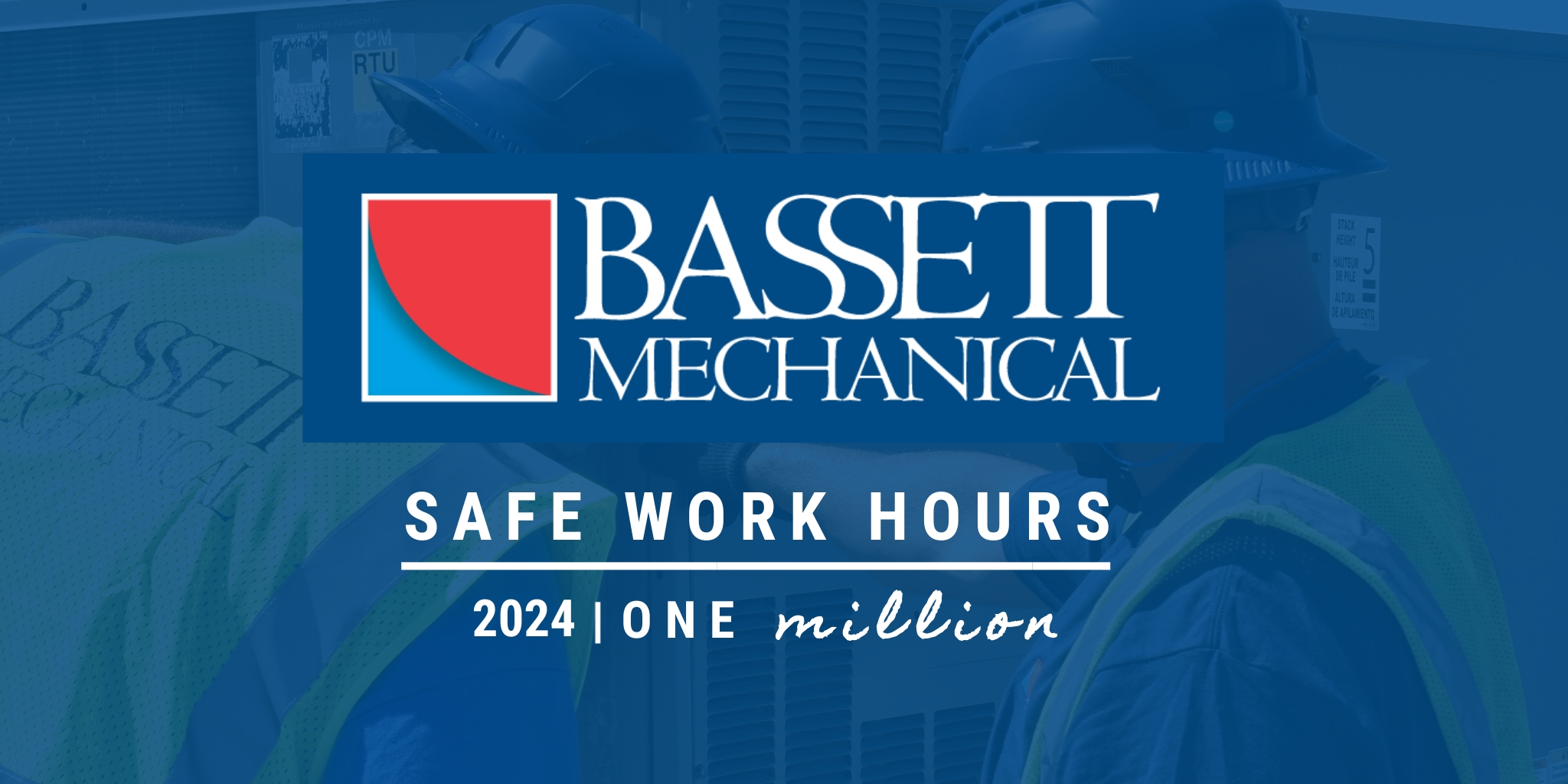
Bassett Mechanical is pleased to offer this educational series to share industry updates and best practices for your facility operations in response to the recent COVID-19 pandemic.
We are committed to keeping you, an important member of our Bassett Mechanical Family, safe and are here to assist you in making informed and proactive decisions related to the quality and safety of your facility.
This series will explain how contaminants may impact your facility and your facility’s mechanical systems, potential strategies and risks to consider, and ways you can respond to help keep your people and products clean and safe.
At Bassett Mechanical we are continuously monitoring recommendations from the Department of Health, CDC, and industry experts such as the American Society of Heating Refrigeration and Air Conditioning Engineers (ASHRAE) to ensure we can provide the most accurate information related to the impact of the COVID-19 pandemic on facilities and mechanical systems. Part one and two of this series focused on mitigation strategies related to indoor air quality and sanitization. Our final portion of this series will focus on the less visible and lesser-known potential contaminant carrier – plumbing systems.
WHAT’S IN THE PIPES?
COVID-19 and Wisconsin’s “Safer at Home” order has forced many businesses to transition their workforce away from their facilities to the safety of their own homes. In doing so, many buildings which are designed for operational use have been left vacant for an extended time to comply with the new orders. While left unoccupied, water can remain stagnant in the piping system creating the potential for bacteria growth.
HOW CAN PLUMBING AFFECT OUR HEALTH?
The Mechanical Contractors Association of America (MCAA) indicates that “stagnant or standing water can cause conditions that increase the risk for growth and spread of Legionella and other biofilm-associated bacteria. It also can lead to low or undetectable levels of disinfectant, such as chlorine, in the water system.” As a result, the water can be unsafe for occupant use. The longer the system has been left idle, the more likely it may be for these conditions to occur.
For this reason, it is important to ensure that the building’s plumbing is not only operational but also safe when employees return to work. The MCAA recommends an entire building flush through a comprehensive water management program which includes recommendations of the CDC as well as associated ASHRAE standards. This flush encompasses appliances like dishwashers, ice machines, and water coolers, eyewash stations, hot tubs, decorative water features, and equipment such as cooling towers, boilers, pumps, backflow preventers, and hot water systems.
POTENTIAL MITIGATION STRATEGIES FOR PLUMBING SYSTEMS
These mitigation strategies may not be applicable or suitable for every facility or plumbing system. It is always best to contact your trusted and knowledgeable plumbing provider for a comprehensive evaluation and proper implementation of strategies that fit your facility’s specific needs.
Clean ice machines and other appliances after delayed use. Ice machines and other appliances that have been standing unused can build up a moist environment that may harbor airborne and other contaminants. Appliances should get flushed, cleaned, and sanitized with the appropriate grade cleaner and sanitizer before use.
Add water monitoring devices to Building Automation Systems. By adding a water monitoring device to your system you can detect a leak in a mechanical room while a building is sitting vacant. This also can provide remote notification if there is an issue, ensuring you will not return to your building to find an unforeseen leak.
Turn unused hot water heaters on. CDC recommends water heaters that are not in use be set to at least 120°F to potentially decrease the risk of bacteria growth. Caution must be exercised when raising hot water temperatures to 120°F or above to ensure the delivery system is set up to prevent scalding possibilities.
Plumbing walk-through for vacant buildings. Buildings that have been sitting vacant should set up a plumbing walk-through and flush systems thoroughly to reduce the risk of bacteria forming during a vacancy period.
Plumbing startup before reopening. It is critical that building owners schedule a plumbing startup for facilities that are set to re-open after being vacant. The CDC has established recommendations for all building owners to follow once they are scheduled to re-open. While every facility is unique and there is not a single solution that encompasses all, the CDC recommends that any unoccupied building should be disinfected, flushed, and tested before being reoccupied.
As your trusted partner, we are here for you as you take steps to ensure your building is occupant safe. To learn more about these important plumbing guidelines and vacant building recommissioning, email us at info@bassettmechanical.com!




